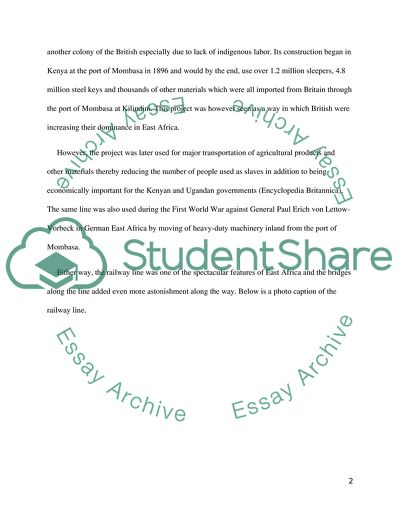Cite this document
(Tsavo Railroad Bridge in Kenya Research Paper Example | Topics and Well Written Essays - 3000 words, n.d.)
Tsavo Railroad Bridge in Kenya Research Paper Example | Topics and Well Written Essays - 3000 words. Retrieved from https://studentshare.org/engineering-and-construction/1873379-tsavo-bridge-kenya
Tsavo Railroad Bridge in Kenya Research Paper Example | Topics and Well Written Essays - 3000 words. Retrieved from https://studentshare.org/engineering-and-construction/1873379-tsavo-bridge-kenya
(Tsavo Railroad Bridge in Kenya Research Paper Example | Topics and Well Written Essays - 3000 Words)
Tsavo Railroad Bridge in Kenya Research Paper Example | Topics and Well Written Essays - 3000 Words. https://studentshare.org/engineering-and-construction/1873379-tsavo-bridge-kenya.
Tsavo Railroad Bridge in Kenya Research Paper Example | Topics and Well Written Essays - 3000 Words. https://studentshare.org/engineering-and-construction/1873379-tsavo-bridge-kenya.
“Tsavo Railroad Bridge in Kenya Research Paper Example | Topics and Well Written Essays - 3000 Words”, n.d. https://studentshare.org/engineering-and-construction/1873379-tsavo-bridge-kenya.


